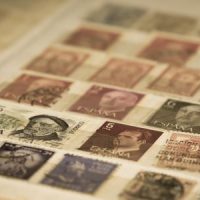Addressing Artwork, Antiques, And Other Collectibles In Estate Planning

Artwork, antiques, and other collectibles can be worth surprisingly large amounts of money, which may increase dramatically over time. In addition to their financial worth, they often have sentimental and historical value as well. To ensure they are appreciated and end up in the right hands, it is important to specifically address these types of items in your will and other estate planning documents.
Make An Inventory of Collectibles
A large variety of items fall under the category of ‘collectibles’, many of which are worth far more than they appear. In addition to obvious items, such as artwork or antiques, the American Association of Retired People (AARP) advises that popular collectibles that can often be found in people’s attics or basements include:
- Action figures and Barbies: These can range in value from several hundred to several thousand dollars;
- Baseball cards: One of the most common collectibles, the right assortment of cards can fetch six figures;
- Comic books: A childhood staple for many people, certain issues are worth millions;
- Sports memorabilia: That old jersey, football, or autograph may be in high demand, particularly if it features a legendary figure;
- Vintage tools: That old toolbox in the garage could hold items that easily go for hundreds of dollars apiece.
Other popular and valuable collector items include stamps, travel souvenir spoons or plates, salt and pepper shakers, and old war medals or other memorabilia. These are important items that should not be overlooked in estate planning documents. The first steps involve making a complete inventory of each object or collection and having it properly valued. You may want to look on sites such as eBay to get a general idea. For more formal valuations, enlist the help of an appraiser.
Including Collections In Estate Planning
Caring for collectibles properly helps to protect their value. Part of the process involves making sure they are included in your estate planning. For smaller collections or single items of worth, you may simply want to list it in your will, along with the estimated value and designated beneficiary.
For larger collections and items worth significant amounts of money, Forbes advises creating a trust. This can provide the following benefits:
- Allows these items to bypass probate court proceedings;
- Potentially saves money in regards to estate taxes;
- Provides a more solid basis for determining value;
- Protect cherished collections for future generations.
Sadly, beneficiaries do not always appreciate the intrinsic value collections offer and may be tempted to sell certain items off for cash. If you prefer that this does not happen, you can prohibit sales, stipulate that the entire collection remains together, name future beneficiaries, or even bequeath it to a museum or local historical site.
Contact an Attorney Today for Help
To find out more about assessing the value of artwork, antiques, and other collectibles and how to protect them in your estate planning documents, contact Cavallo & Cavallo. Request a consultation with our Bronx & Westchester estate planning attorneys in our office today.
Resource:
forbes.com/sites/jeffcamarda/2019/04/08/astute-estate-planning-for-art-antiques-and-valuable-collectibles/?sh=44e060643538
